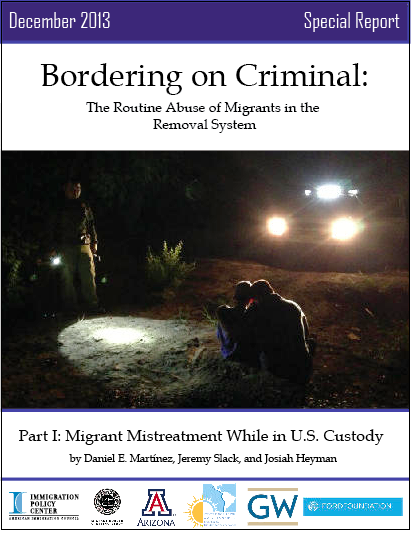The House of Representatives and the Senate have embarked upon very different paths when it comes to immigration reform. On June 27, the Senate passed a comprehensive immigration reform bill—S. 744 (the Border Security, Economic Opportunity, and Immigration Modernization Act)—that seeks to revamp practically every dysfunctional component of the U.S. immigration system. The House leadership, on the other hand, favors a piecemeal approach in which a series of immigration bills are passed, each addressing a different aspect of the larger immigration system. To date, the most popular of these piecemeal bills has been H.R. 1417 (the Border Security Results Act), which was passed unanimously on May 15 by the House Committee on Homeland Security. H.R. 1417 is, in marked contrast to S. 744, an enforcement-only bill which does not acknowledge the existence of any other component of immigration reform.
Nevertheless, the border-enforcement provisions of S. 744 aren’t all that different from those contained within H.R. 1417. Both bills share the arbitrary and possibly unworkable goals of “operational control” (a 90 percent deterrence rate) and 100 percent “situational awareness” along the entire southwest border. The Senate bill also added insult to injury in the form of the Corker-Hoeven (“border surge”) amendment, which seeks to micromanage border-security operations and would gratuitously appropriate tens of billions of dollars in additional funding, and hire tens of thousands of additional Border Patrol agents, before the Department of Homeland Security (DHS) has even determined what resource and staffing levels are needed to do the job.Read more...
Published On: Wed, Jul 24, 2013 | Download File



